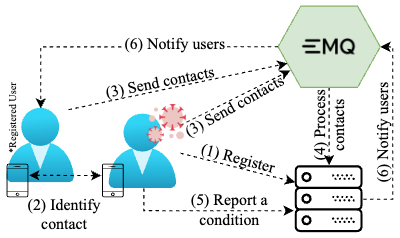Understanding mobility in networks: A node embedding approach
Motivated by the growing number of mobile devices capable of connecting and exchanging messages, we propose a methodology aiming to model and analyze node mobility in networks. We note that many existing solutions in the literature rely on topological measurements calculated directly on the graph of node contacts, aiming to capture the notion of the node’s importance in terms of connectivity and mobility patterns beneficial for prototyping, design, and deployment of mobile networks. However, each measure has its specificity and fails to generalize the node importance notions that ultimately change over time. Unlike previous approaches, our methodology is based on a node embedding method that models and unveils the nodes’ importance in mobility and connectivity patterns while preserving their spatial and temporal characteristics. We focus on a case study based on a trace of group meetings. The results show that our methodology provides a rich representation for extracting different mobility and connectivity patterns, which can be helpful for various applications and services in mobile networks.
Please cite:
@article{DBLP:journals/corr/abs-2111-06161,
author = {Matheus F. C. Barros and
Carlos Henrique Gomes Ferreira and
Bruno Pereira dos Santos and
Louren{\c{c}}o Alves Pereira J{\'{u}}nior and
Marco Mellia and
Jussara M. Almeida},
title = {Understanding mobility in networks: {A} node embedding approach},
journal = {CoRR},
volume = {abs/2111.06161},
year = {2021},
url = {https://arxiv.org/abs/2111.06161},
eprinttype = {arXiv},
eprint = {2111.06161},
timestamp = {Tue, 16 Nov 2021 12:12:31 +0100},
biburl = {https://dblp.org/rec/journals/corr/abs-2111-06161.bib},
bibsource = {dblp computer science bibliography, https://dblp.org}
}





Leave a comment